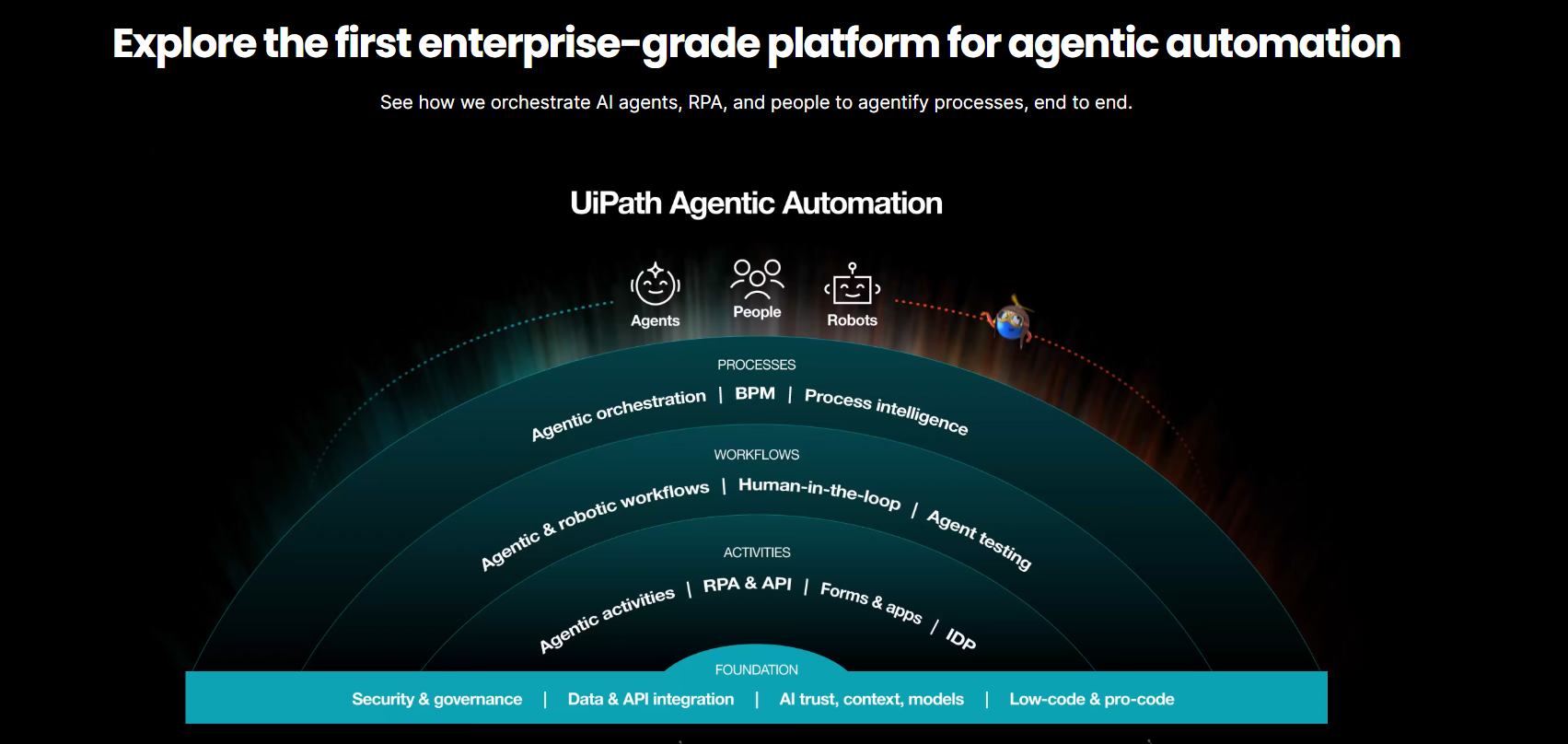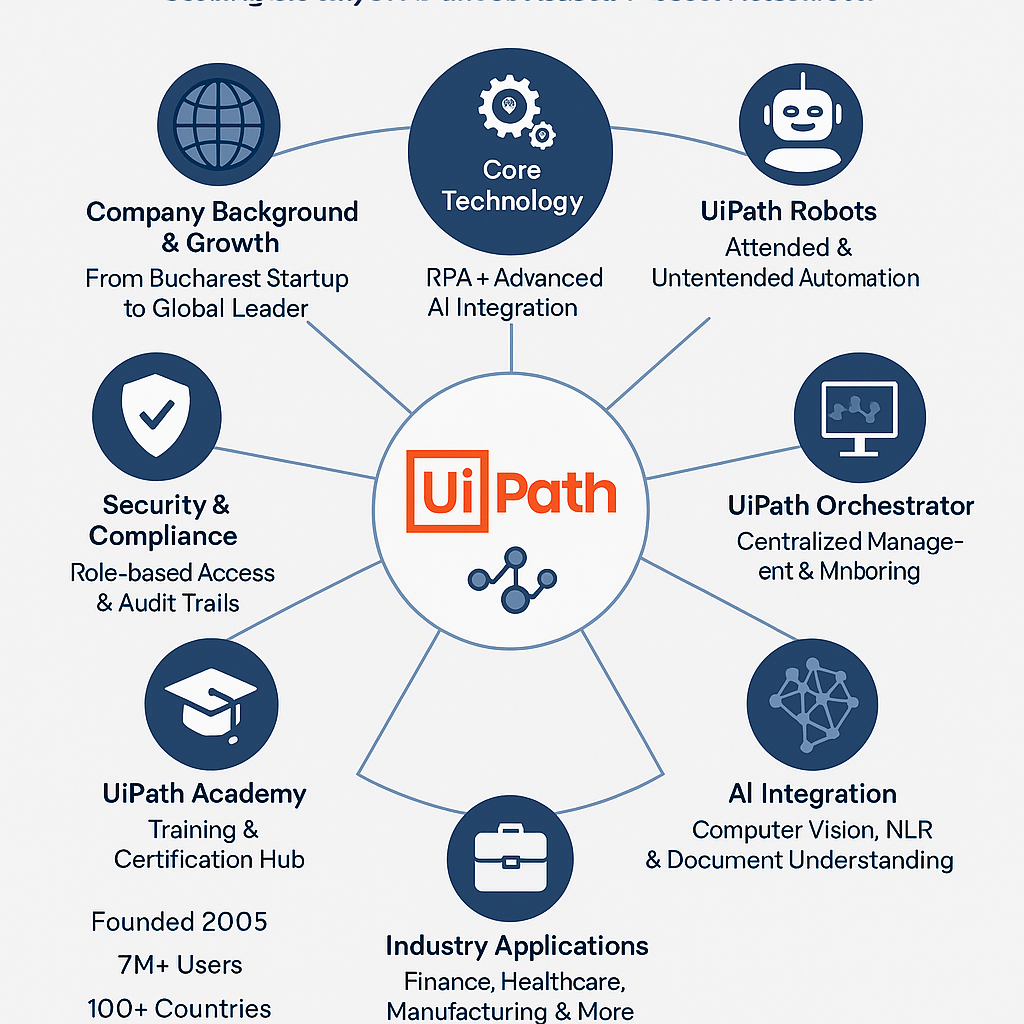
UiPath has emerged as a transformative force in the domain of enterprise automation. Founded in 2005, UiPath combines Robotic Process Automation (RPA) with cutting-edge Artificial Intelligence (AI) capabilities to help organizations around the globe automate repetitive tasks, enhance operational efficiency, and drive digital transformation. This publication provides an in-depth exploration of UiPath's history, technological foundation, ecosystem architecture, agentic automation model, industry applications, competitive strengths, and future roadmap
UiPath was established by Daniel Dines and Marius Tîrcă in Bucharest, Romania. Initially focusing on outsourcing and computer vision solutions, the company pivoted toward RPA and rapidly became one of the most significant players in enterprise automation. Headquartered in New York City, UiPath has grown into a global automation leader with a robust client base across sectors such as banking, healthcare, insurance, retail, and public services.
UiPath's mission centers around enabling the "Fully Automated Enterprise™," where every repetitive, rule-based business process can be automated to allow humans to focus on strategic, creative, and interpersonal work.
Analysis:
UiPath integrates RPA with advanced Artificial Intelligence (AI) capabilities. Its main components include:
Example & Sample Use-Case:
Traditionally, automation began with static scripts, macros, and rule-based systems. These were limited in scope, difficult to scale, and often brittle. RPA revolutionized this by allowing bots to mimic human interactions with digital systems. UiPath expanded RPA by integrating AI models, giving rise to intelligent automation capable of learning and adapting.
Hyperautomation extends RPA by integrating it with AI, machine learning (ML), process mining, analytics, and decision management systems. UiPath is a market leader in this domain, offering a holistic platform that spans discovery, automation, optimization, and governance.

UiPath Studio is a development environment that enables users to create automation workflows with a drag-and-drop interface. It supports both:
StudioX: Tailored for business users (citizen developers)
Studio: Aimed at professional developers for complex automation logic
Studio supports Visual Basic and C# expressions and is tightly integrated with UiPath's libraries and AI models.
UiPath Robots are the execution layer of automation. They are classified into:
Attended Robots: Work side-by-side with humans, triggered on-demand
Unattended Robots: Operate independently in the background based on schedules or triggers
These bots can work across applications, interact with user interfaces, and execute business rules with high reliability.
Orchestrator is a centralized, web-based platform used to:
Orchestrator ensures scalability and enterprise-grade governance of the automation lifecycle.
AI Center enables organizations to:
It provides a robust MLOps environment for building, validating, and monitoring AI-driven automations.
This feature combines OCR, ML, and RPA to extract structured data from unstructured documents such as invoices, receipts, and contracts. It's invaluable in industries like finance and legal where documentation is core.
UiPath’s discovery tools help identify automation opportunities by analyzing user actions (task mining) and end-to-end processes (process mining). This data-driven insight helps prioritize high-ROI automation initiatives.
UiPath Test Suite allows automated testing of workflows, systems, and applications. It supports:
This ensures reliability and faster iteration of automation solutions.
Agentic automation represents UiPath’s evolution from deterministic workflows to collaborative intelligence:
This hybrid model combines speed and accuracy of automation with the contextual judgment of human users, optimizing both efficiency and reliability.
UiPath adheres to global compliance standards and incorporates best-in-class security protocols:
Governance tools help control bot sprawl, enforce usage policies, and manage citizen developer environments.
UiPath is widely adopted across industries for use cases such as:
| Sector | Application |
|---|---|
| Banking & Finance | Loan processing, KYC/AML checks, fraud detection |
| Healthcare | Claims processing, patient scheduling, EHR management |
| Retail | Inventory optimization, returns processing, customer analytics |
| Manufacturing | Supply chain automation, invoice matching, vendor onboarding |
| Public Sector | Tax automation, permits processing, citizen engagement portals |
UiPath distinguishes itself through:
UiPath aims to extend its dominance through:
UiPath has redefined enterprise automation by marrying RPA with AI, fostering a future where machines augment human capabilities. Its commitment to innovation, security, and democratization of automation makes it a cornerstone of digital transformation strategies worldwide. As industries increasingly adopt AI-driven processes, UiPath remains poised to lead the next frontier in intelligent enterprise automation.
# Tags UiPath, Enterprise Automation, RPA, AI, Hyperautomation, Agentic Automation, UiPath Studio, Orchestrator, Digital Workforce, Document Understanding, ML Ops, AI Center, Security, Compliance, Enterprise Software, Digital Transformation, Automation Governance, Citizen Developers, Intelligent Bots, Workflow Automation